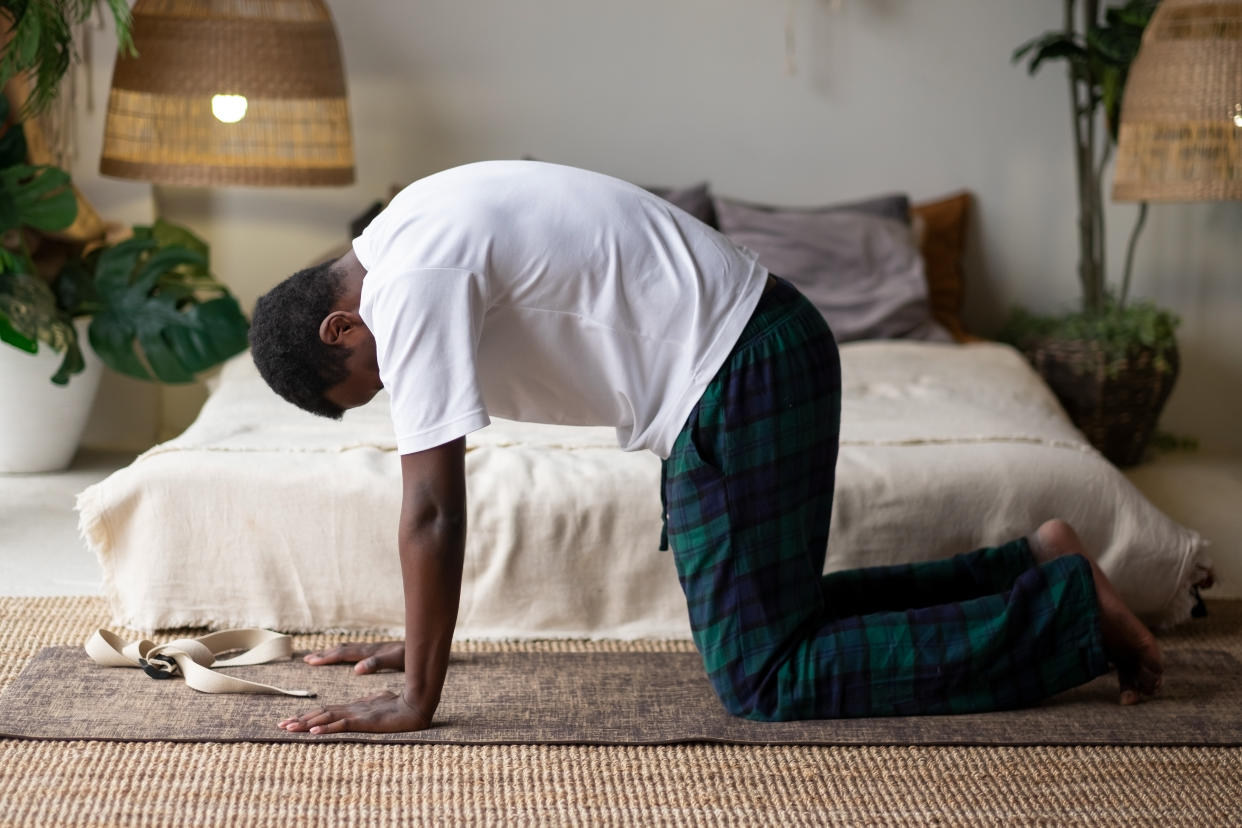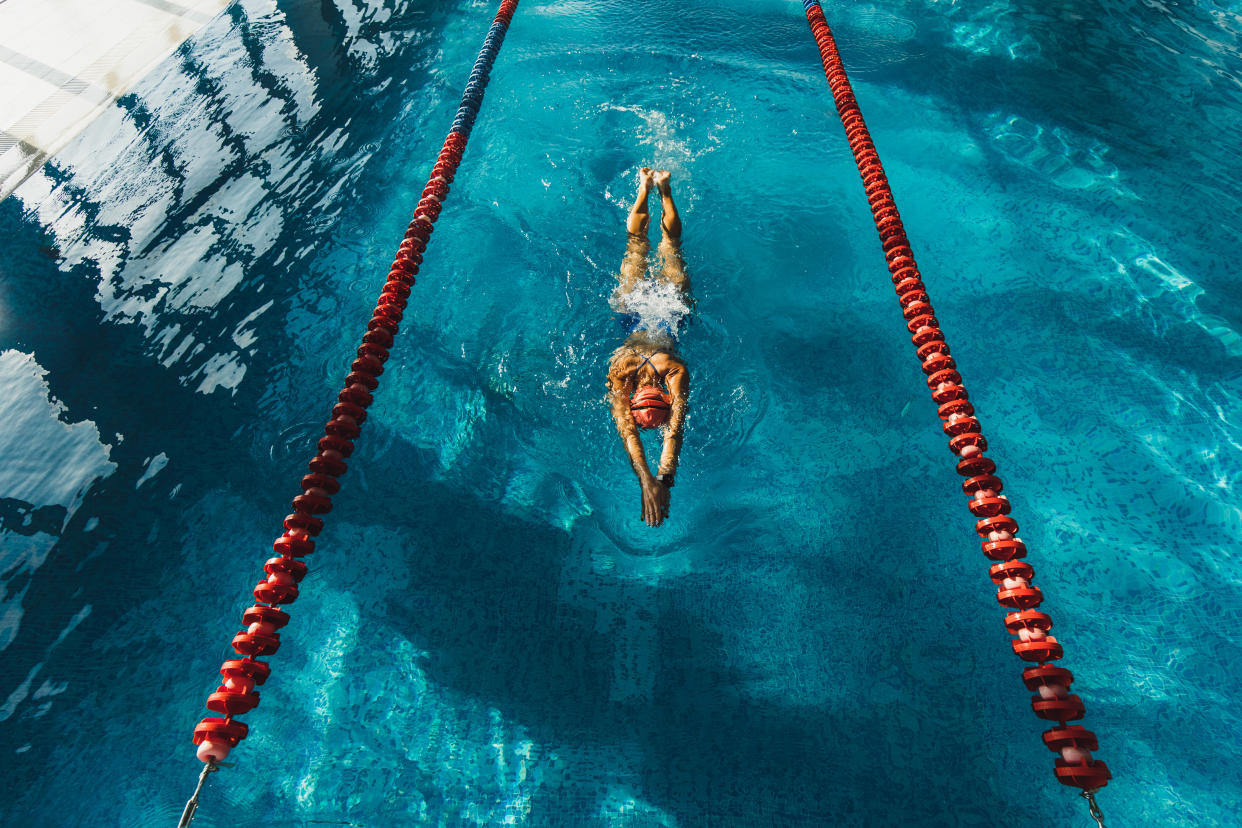4 easy exercises that can help bloating and constipation

Your gut health is an integral part of how you function as it is a broad term for how your body absorbs nutrients and uses these to keep everything ticking.
While food is a go-to tool in supporting gut health, did you know that certain exercises can support it too?
In fact, regular exercise and movement can increase the diversity of the gut microbiota (the microorganisms that keep our guts health), and it can also stimulate the digestive system which can alleviate common gut ailments like bloating and constipation.
So, what exercises can you do to keep your gut healthy? Health performance coach, David Birtwistle has partnered with Yakult to reveal his top tips.
1. Warm up
Before you even start your workout, Birtwistle recommends always beginning with a warm up to get your muscles moving.
“This can be some gentle stretches, eventually working up to some more repetitive movements and lunges,” he explains.
“This will help to prepare you mentally and physically and increase your heart rate, and therefore your blood flow, to enable more oxygen to reach your muscles.”
He suggests allocating around 10 minutes for a warm up and including yoga poses such as cat cow, reach through, and hip flexor lunges.

2. Strength exercises
“Muscle strengthening exercises, which includes using weights of some form, whether that be your body weight or equipment, are important as they can help you maintain the ability to perform everyday tasks,” Birtwistle says.
“Exercise in any form can help the gut, while strengthening exercises may also reduce gut inflammation and slow down the rate of bone and muscle loss associated with ageing.”
Plus, you don’t even need to step foot in a gym to begin strength exercises – simply use a bottle of water or a can of beans to start.
“If you’re including strength exercises as part of your routine, then you should dedicate 15 minutes to it,” he adds. “Try exercises such as half-kneeling overhead presses with weights and a three-point dumbbell row. Repeat eight times across four sets with small breaks in between.”
3. Pick your own cardio
Cardio doesn’t have to mean running. It can be anything from a walk in nature, to cycling, swimming, or dancing.
“Cardio consists of moving quickly enough to raise your heart rate, breathing faster and feeling warmer,” Birtwistle says. “Physical activity also increases blood flow to the muscles in the digestive system, which helps move food along the digestive tract.”
If long stretches of cardio feel tedious, Birtwistle suggests shorter 15-minute bursts to raise your heart rate.

4. Cardio at home
“For the days when you can’t get out of the house or you don’t have a gym membership, try building cardio into your daily routine at home,” Birtwistle says.
“If you’re at home, you can do jogging on the spot, burpees or mountain climbers. These can all be modified depending on your fitness ability, so start small and build up over time.”
Best post-workout meals and snacks
What you eat after your workout can be just as crucial as the workout itself. Dr Emily Prpa suggests chomping down on some good-quality protein to help muscle repair.
“If you’re planning to have a main meal, then consider eggs, chicken or fish,” she says. “Otherwise, good snack options include a handful of mixed nuts and dried fruit, Greek yoghurt with fruit and wholegrain cereals, or a type of nut butter on rice cakes.”
Dr Prpa adds that hydration is also key post-workout to replace the fluids lost during exercise.
“Introduce water-rich fruits and vegetables as a post-workout snack such as watermelon, tomatoes, strawberries, oranges and cucumber. Your gut will love them too,” she says.
“A balanced diet is key to feeding the bacteria in the gut, so adding in foods that feed the gut microbiota can help support gut health, as well as give the body the nourishment it needs when it comes to physical activity.”
Gut health: Read more
Gut health: Foods to eat and avoid to improve your wellbeing (Yahoo Life UK, 8-min read)
How your gut health affects your mental health (Yahoo Life UK, 4-min read)
How rapid weight loss affects gut health as woman loses 4st in 5 weeks (Yahoo Life UK, 4-min read)


